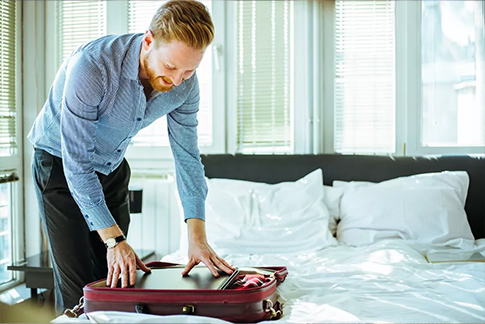How to Choose and Wear a Back Brace
If you’re wondering, “Why does my back hurt?” you’re not alone. Nearly 65 million Americans say they’ve recently experienced back pain, and around 16 million adults live with persistent or chronic back pain, according to the Georgetown University Health Policy Institute.
In many cases, a back support or back brace can help. They can relieve pain by supporting your back; limiting movement; adjusting your posture; and relieving tension in the muscles.
Before wearing a brace, however, you should ask your healthcare provider if they recommend a back support and if so, which one to choose. Wearing the wrong type of back brace can make your condition worse.
Back Brace Levels of Support
When you’re buying a torso or back brace, consider the level of support you need. Keep in mind that the more rigid the brace, the more limited your range of motion.
- Flexible back braces are made of stretchy fabric, with or without stiff supports.
- Semi-rigid back braces combine flexible fabric panels with stiffer supports.
- Rigid back braces feature fabric straps and rigid uprights that restrict bending motion.


Types of Back Braces and Supports
t’s important to choose a brace designed for the part of your back that needs support: lower, middle or upper.
A sacroiliac belt wraps around the pelvis to compress the sacroiliac joints, which are located on both sides of your sacrum (the base of your spine).
A back support belt (also called a lumbar belt or back stabilizer) is worn to support the lower back, relieving lower back pain.
A work belt is a type of lumbar support belt that’s designed to reduce lower-back pain while you’re active — on a job site, for example, or lifting heavy objects.
Corset back braces are tightened with laces and worn to help lower or middle back pain.
Posture correctors are worn like a backpack to support the upper back and shoulders. They can help activate your muscles to correct rounded shoulders and hunching, relieving back pain in the process.
A full-body back brace for scoliosis or other conditions is a rigid support for the entire torso. Examples include:
- The Boston brace, a custom-made brace for the non-operative treatment of scoliosis and kyphosis
- The Milwaukee brace, a corrective spinal orthosis for children intended to correct curvature in the upper spine
A chairback brace is a short, rigid back brace that restricts bending and rotation in the lower spine.
The Williams brace allows forward bending while limiting movement from side to side.
Hyperextension braces limit forward bending and are used to treat stress fractures.
Conditions That May Require a Back Brace or Support
Back strain or sprain: When your back muscles or tendons are pulled or torn, that’s a strain. If you stretch or tear a ligament in the back, that’s a sprain. In some cases, short-term use of a back support may help a strained or sprained back.
Herniated discs: Also called a slipped disk or a ruptured disk, a herniated disk occurs when the soft center (nucleus) of a spinal disk slips out through a tear in the outer wall (annulus).
Sacroiliac joint dysfunction: When the sacroiliac joint (which connects the sacrum to the pelvis) doesn’t move properly, that can cause pain in the lower back, pelvis, buttock, hip and/or groin.
Sciatica: Sciatica is a general term for pain caused by the injury, inflammation, pinching or compression of a nerve in the lower back. It can be caused by a herniated disk, degenerative disk disease, spinal stenosis, arthritis and other conditions. A back brace for sciatica can help relieve pain.
Scoliosis: Scoliosis causes a sideways curve in the spine. When diagnosed in adolescence, scoliosis often can be corrected by wearing a back brace.
Spinal arthritis: Arthritis involves the inflammation/degeneration of the small joints (facet joints) that connect the vertebral bones. There are more than 100 different types of arthritis, and many affect the back. These include osteoarthritis, rheumatoid arthritis and spondyloarthritis.
Spinal surgery: Following back surgery, you may be told to wear a brace for a prescribed period of time to support and stabilize the spine.
Vertebral compression fractures: Common in people with osteoporosis, vertebral compression fractures occur when the bony structure of the vertebra collapses. Back bracing can help restrict movement and reduce pain.

Related Products
Sources
Back Strains and Sprains (Cleveland Clinic)
Rigid Braces: A Type of Spinal Brace (SpineUniverse)
Sacroiliac Joint Dysfunction (Cedars Sinai)
Spinal Arthritis (Arthritis in the Back or Neck) (Johns Hopkins Medicine)
Vertebral Compression Fractures (American Association of Neurological Surgeons)

